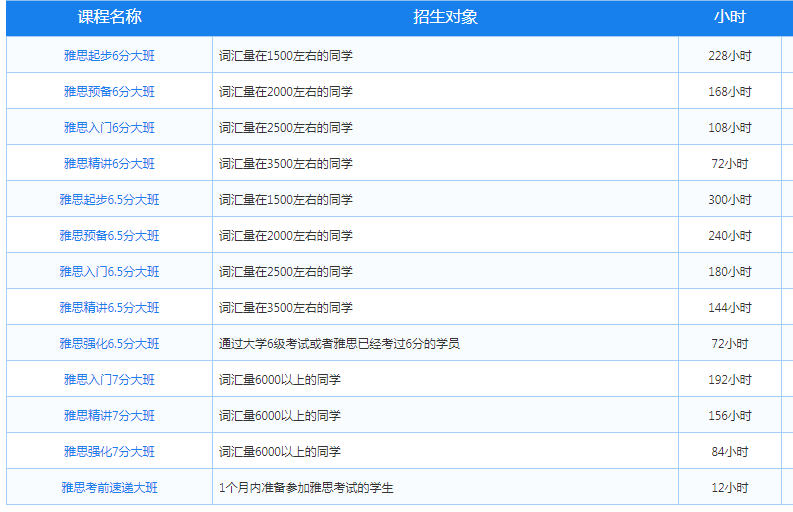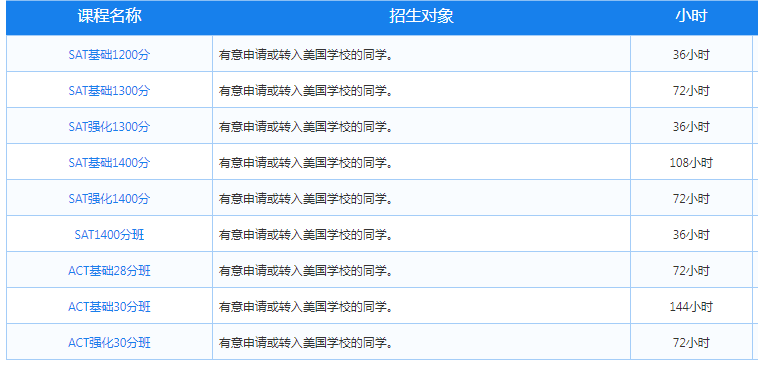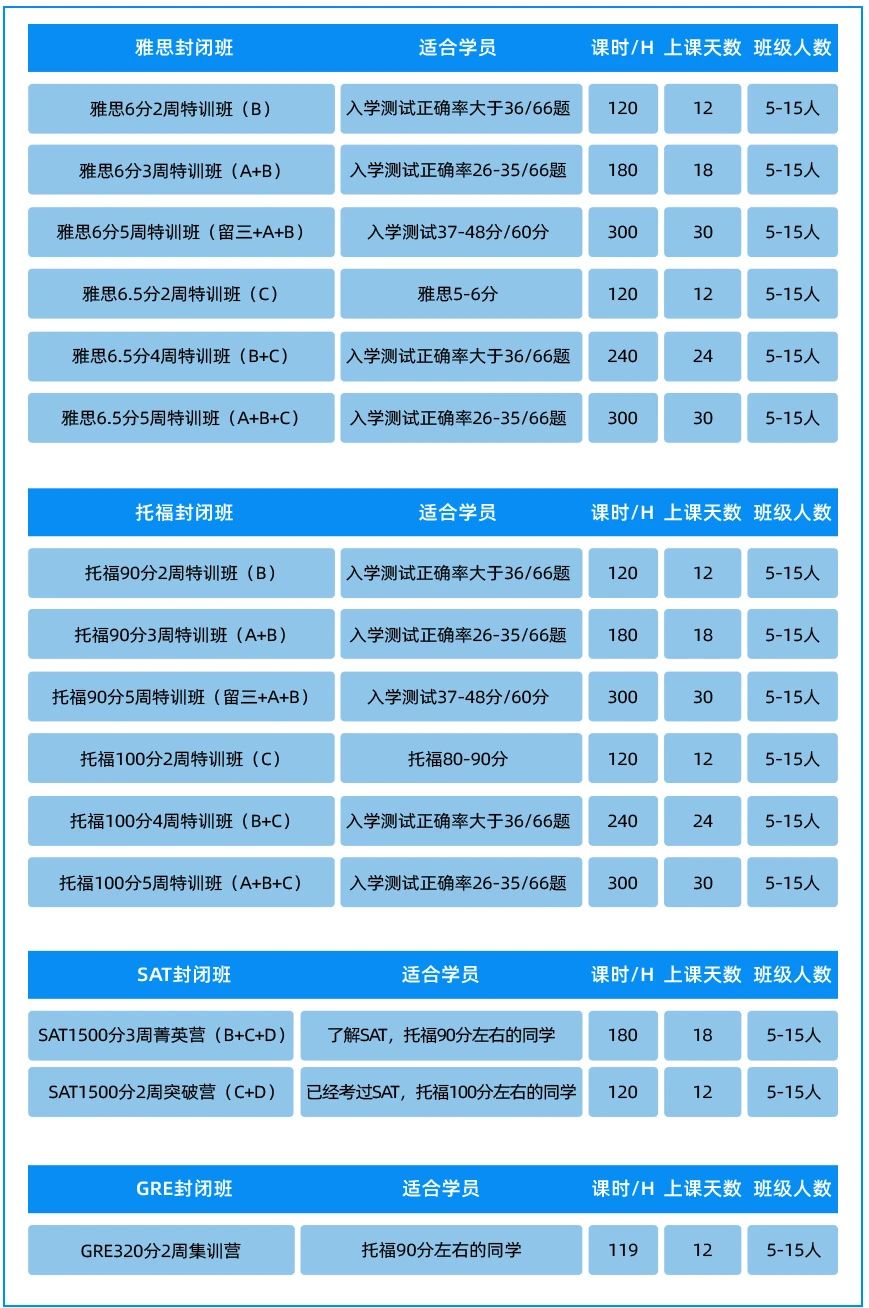浙江新航道雅思培训学校直击考场 | 2月8日雅思考试回忆
【以下答案和顺序仅供参考】
Part 1:托管咨询题型:填空题关键词:pillow, coat, snack, medicine(具体题目待回忆)P1点评:Part 1为常见的咨询场景类话题。据考生回忆,答案词常规,拼写难度不大;但需要考生熟练掌握基础知识点,比如5.45的各种读法,以及星期、月份拼写等。推荐练习篇目:九分达人4-T2S1(Enquiring about Art Class)九分达人6-T2S1(Tour Booking Enquiry)
Part 2: 雕像公园介绍题型:单选+配对(地图)关键词:Park(具体题目待回忆)P2点评:从去年起,地图每月必考。因此,地图题是纸笔考试考生需要重点准备的题型。平时练习时,除了积累地图题常考相关方位表达外,还需积累记忆自己不熟悉的话题场景词,以免影响答案句理解。推荐练习篇目:九分达人5-T3S2九分达人6-T2S2(Plan of Community Centre)
Part 3: 蚁害题型:多选+配对关键词:rain, ant(具体题目待回忆)P3点评:此部分虽然场景内容不难,但题型较难。多选和配对同时出现,一方面审题压力较大,另一方面多选和配对节奏较快,对听力能力要求较高,考察对录音答案句的瞬时理解能力。考试在平时备考时需尽可能夯实词汇基础;其次,多做长句分析练习,提升自己快速提取句子主干的能力;听力过程中可以利用笔记辅助记忆重点信息。推荐练习篇目:九分达人4-T6S3(Whale Survey)
Part 4: Food Distribution Safety题型:填空题31.Food distribution is very important facts because food is easily contaminated on the way.
32. Future career: be food inspectors33. Background: it requires knowledge which is related to the chemistry
34. This special training course focus on food safety
35. business should reserved extra area for: food storage
36. food package
37. food processing
38. Information pay attention to the labels on products
39. The effect of high temperature on protein has gone bad.
40. Enterprise supply finance support to college research.P4点评:
P4考察食品安全相关话题,内容不难。部分答案词在日常练习剑雅真题时会遇到,比如“processing加工”、“protein蛋白质”“package包装”,平时练习时考试需做个有心人,遇到不认识的单词时多积累。推荐练习篇目:九分达人6-T4S4(Organic Farming)
概览:本次考试的题型组合遵循了常规模式,继年前P1部分出现的非典型组合配对题之后,本次考试重新采用了填空题和判断题的组合形式。然而,填空题的数量相对较多,特别是对于字数限制为“NO MORE THAN THREE WORDS”的题目,许多考生在字数筛选上犹豫不决,这可能消耗了考生宝贵的考试时间。P2和P3部分的话题和难度保持了以往的水平,但P3部分出现的书评题目,对于那些平时未接触过此类话题文章的考生而言,常常感到难以把握。
Passage 1主题:一项解决室内污染的项目题型:填空题(9个)+判断题(4个)类别:环保难度:★★★参考答案填空1 Low birth weight2 Biomass fuel3 High distribution costs4 Special stoves5 Consultations6 Pilot projects7 Review8 10 million9 International判断10 TRUE11 FALSE12 NOT GIVEN13 FALSE概述本次考试中,P1部分无疑是最为友好的。无论是题型组合还是话题选择,难度都相当合理。然而,许多考生对于简答题填空部分感到陌生,也不知道首写字母是否要大写,这反映出平时练习不足。实际上,简答填空与挖空添词的填空题型非常相似,掌握起来相对容易。
Passage 2主题:Orientation of birds题型:单选(5个)+段落信息配对(4个)+特殊词配对(4个)类别: 动物难度:★★★★参考答案单选14.第一种类型:视觉记忆15.第二种类型:迁徙方向16.第二种类型:目的地17.第三种类型:地标18.第三种类型:莱桑铱鸟·段落信息配对19.距离对某些鸟类找回巢穴能力的影响:段落:C20.测试鸟类找巢穴的能力的方法:段落:B21.人类与鸟类身体能力的一个方面:段落:C22.为了实验目的而延迟集些鸟多的迁徙:段落:G特殊词配对23.家鸽:C24.高山秋鹰:F25.欧洲鹳:A26.星雀:D概述:继2025年1月4日首次考试对动物类文章进行考察后,本月首次考试再次聚焦该主题。通常,此类话题会涉及以下知识点,建议学生积极扩充相关词汇及背景知识。1.生理特征• 例如动物的身体结构特点,像鸟类的翅膀结构与飞行能力的关系。如果是关于鱼类的文章,可能会涉及到鱼鳍的功能、鳃的构造等。 特殊的感官能力,如蝙蝠的回声定位系统,考题可能会问这种能力的工作原理或者在生存中的重要性。2. 生活习性• 饮食方面,像食草动物的食物来源种类、食肉动物的捕猎策略。例如,狮子如何团队协作进行捕猎。• 居住环境,包括巢穴的类型(如燕子的泥巢)、洞穴的选择标准等。• 迁移习性,如候鸟的迁徙路线、迁徙的时间节点以及影响迁徙的因素。3. 繁殖方式• 不同动物的繁殖周期,像哺乳动物孕期长短的区别。• 繁殖行为,例如孔雀开屏求偶的行为特点及其背后的进化意义。4. 与人类的关系• 经济价值,如蜜蜂的授粉作用对农业的重要性,或者某些动物皮毛的商业价值。• 对人类健康的威胁,像蚊子传播疾病的方式和预防措施。参考练习文章:剑雅19 Test 4-Passage 1The impact of climate change on butterflies in Britain剑雅17 Test 3-Passage 1The thylacine剑雅17 Test 4-Passage 1Bats to the rescue剑雅16 Test 1-Passage 1Why we need to protect polar bears剑雅15 Test 2-Passage 2Should we try to bring extinct species back to life?参考文章READING PASSAGE 2Orientation of birdsAFor many of US, the way birds are able to orientate is both astounding and difficult to appreciate fully. For instance, the annual migration of tire golden plover of the Pacific takes it from Alaska to Hawaii on a flight of well over 3000 kilometres, and if it were to deviate by only one degree, it would miss the island on which it nests.BThe first systematic studies on orientation in birds were made possible by the ‘homing instinct’ exhibited by so many species. Birds are caught at a time when they show an attachment to their territory, especially during the nesting season. They are taken to some spot, released, and the percentage of returns is recorded. The distance can be varied, and the direction, as well as the method of transporting them, and then the influence of climatic and other factors on their ability to find their way home can be studied. These experiments have shown a wide variation in ability to home, and three types of homing behaviour have been identified.C In the first type, birds methodically explore the area in which they are released until they pick up some familiar feature, and then they quickly find their way back to the nest. Such birds possess a highly developed visual memory, as experiments with pigeons have shown. Domestic pigeons have been trained to peck at a certain point on an aerial photograph, with a system of rewards, and four years later the birds were still able to respond to this training when placed on the aerial photograph. Birds’ eyes have a power of resolution two to three times greater than ours, enabling them to pick up very fine details. If a bird uses only this type of homing behaviour, however, it can only succeed if the point of release is not too far away. If the birds are transported 800 kilometres from their nest, it is only by good fortune that they find their way back as a result of long exploratory flights. Usually, the area known to a bird is its feeding territory. Released within this area, the birds soon make their return; release them outside it and far fewer return. However, if a bird is released for a second time in the same place, its visual memory comes into play, and the bird, no longer requiring tedious exploratory flights, will return much more quickly.DThe second type of homing behaviour is shown by birds that are capable of choosing their flight direction and holding to it for the rest of their journey. How do they decide what direction to take? They appear to choose their normal migration direction even if they are released in a different place from their usual stalling point. If, for example, birds which normally fly to the north-east to reach latitude 45 degrees north are released at that latitude, they will immediately start flying north-east anyway. So if they’re released further to the west, they’ll maintain the correct direction, but fly west of their destination, and so fail to arrive.EThe third type of homing behaviour shows the highest degree of orientation. Released at one point, the birds immediately take stock of it, compare its position with that of the nest, decide on the direction and fly off. This happens even if the birds are in a country right off their migration routes, where they have never been before. In one example, a laysan albatross returned to its nesting area on Midway Island in the middle of the Pacific, having flown over 5000 kilometres from the west coastal of the USA in just over ten days. This is a perfect example of the third type of homing, for the albatross clearly couldn’t rely on any landmarks over the vast expanse of the Pacific Ocean.FThe percentage of successful birds varies greatly, being highest in those species with a strong migratory behaviour. Thus the lesser black-backed gull is more migratory than the herring gull and more often reaches ‘home’. Great migrants such as the swift have the highest percentage of returns. In one case, seven out of nine alpine swifts were recaptured at their nests after being displaced some 1400 kilometres; one made the journey in three days.GWhat part does heredity play in all this? Two research studies suggest that instinctive, i.e. genetically inherited, behaviour patterns play a part in navigation. The first was carried out by Ernst Schuz and it is highly significant. Schuz caught first year European storks and released them later, after the departure of the adult storks at a time when they normally make their south-west autumn migration to Africa. The recaptures showed that, in spite of thefact that there were no adults to guide them, the birds unanimously headed south-west. This was a most striking finding, for it showed that the birds had an innate and unlearned attraction for the African wintering area that they have occupied for thousands of years.HThe case of starlings is a little different. These birds have a great aptitude for homing, but this behaviour differs in the different age groups. Birds that were shifted to the south-east of their normal migration route split into two lots. The adults, in full possession of their gift for orientation, found their wintering area by modifying their direction by 90 degrees, whereas the juveniles sought their winter quarters to the south-east of their real position.Questions 1-5Complete the summery below.Choose NO MORE THAN TWO WORDS from the passage for each answer.Write your answers in boxes 1-5 on your answer sheet.Types of homing behaviourFirst type:Birds rely on their sophisticated 1...................... However, they are generally mostsuccessful if they are released within their feeding territory.Second type:Birds select their accustomed 2....................., no matter where they are released. As aresult, they may miss their 3.....................Third type:Birds orientate correctly, even when they are released in an unfamiliar place and have no4..................... to make use of. One bird with this type of skill is the 5.....................Questions 7-9Reading Passage has eight paragraphs, A-HWhich paragraph contains the following information?Write the correct letter, A-H, in boxes 7-9 on your answer sheet.NB You may use any letter more than once.6..................... the effects of distance on some birds’ ability to find their nests7..................... a methodology for testing the general ability of birds to find their nests8..................... one aspect of physical ability in humans and birds9..................... how some birds’ migration was delayed for experimental purposesQuestions 10-13Look at the following types of birds (Questions 10-13) and the list of points which the authorwishes to illustrate below.Match each bird with the point which it illustrates, A-G.Write the correct letter, A-G, in boxes 10-13 on your answer sheet.10..................... domestic pigeon11..................... alpine swift12..................... European stork13..................... starlingList of points which the author wishes to illustrateA an ability to orientate without previous trainingB the speed at which birds can flyC the ability to remember things seen previouslyD the effect of age on homing abilityE the strength required to fly a great distanceF a high success rate in finding nestsG the importance of seasonal cues for migrating birds参考答案1.visual memory2. migration direction3. destination4. landmarks5. (laysan) albatross6. C7. B8. C9. G10. C11. F12. A13. D
Passage 3主题:航空领域著作的书评(Aviation)题型:单选(5个)+判断题(4个)+句子配对(5个)类别:书评科技难度:★★★★参考答案待回忆概述:在P3部分,通常以议论文为主要考察形式。本次考试特别采用书评形式,以评估考生对观点和态度的掌握程度。建议考生在备考期间,应重点关注观点句型的表达技巧,以及情感色彩的辨识,以便在答题过程中进行有效筛选。雅思阅读书评类文章的考点主要包括以下几个方面:1. 对书内容的理解:考生需要理解书评中对书籍内容的概述和描述,包括书名、作者、主要观点和结构等 。 2. 对评论者读后感和观点的理解:书评通常包含评论者对书籍的评价、感受和观点,考生需要准确捕捉这些信息,并理解评论者的立场和态度 。 3. 区分事实与观点态度:在阅读书评时,考生需要能够区分文章中的事实性描述和评论者的主观观点。例如,注意“maintain”“argue”等词后面通常跟随观点,而“evidence show”“experiment suggest”等词后面则通常跟随事实 。 4. 理解文章结构与逻辑:书评通常有一定的结构,包括引言、主体和结论等部分。考生需要理解文章的组织结构,以便更好地把握作者的意图和逻辑关系。
Task 1小作文The graph below shows the number of visitors to four different museums in the UK from June to October in 2015. Summarise the information by selecting and reporting the main features, and make comparisons where relevant. 题目分析本题属于动态柱状图,要求对四个博物馆在五个月内的参观人数进行数据对比和概括。重点应描述数据随时间发生的变化,以及各个博物馆之间的数据落差。从图中中可以看到:1.最突出的特点,British museum的参观人数大多数月份稳定且在4个博物馆当中最少,但在8月有极大增幅,达到最大值700000。2.History museum同样在8月有明显增长,在10月有小幅回升。3. National museum在前3个月轻微下跌,9月最高但10月回落。4. Science museum前3个月基本稳定,9月骤降最低,10月回升。答题思路1. 开头及总述:改写题干,并总体概述所有博物馆的人数都大体稳定,但在特定月份有明显起落。2.细节段1:同在8月暴涨的British museum和History museum可以放在一起对比描述。前者在除了8月之外的时间最少,但在8月全场最高(700000);后者大多数时间人数较多,稳定在400000左右,8月达到最大值600000,10月小幅回升到480000.3.细节段2:National museum和Science museum可放同一段描述,两者前3个月数据相差不大。前者持续轻微下跌后9月攀升至500000,随后回落;后者持续稳定在400000之后,9月骤然减半达到低谷,10月回升。Tips: 掌握动态数据描述常用替换词;重视对比词和时间连词的使用。Task 2 大作文Some people think rapid population growth in cities only benefits people who live there while others believe that there are disadvantages. Discuss both these views and give your own opinion.题目分析本题为双边讨论型,要求讨论城市人口快速增长的利弊。注意正方强调“仅仅有利于当地居民”,反方强调“存在弊端”。参考思路:1. 开头段:简要引入话题和双方观点,可强调己方立场。2.主体段1:城市人口增长的好处:1) 经济发展。劳动力供应充足;人才涌现;提高创造力和生产力(creativity and productivity);2) 城市生活的便利。人口增长必然催生基建高速发展(construction of infrastructure), 带来更便利的交通体系、商业模式和生活资源。3. 主体段2:可能存在的弊端:1) 人口密度(population density)增加,交通拥堵,噪音增加,生活舒适度可能下降2) 环境污染增加:大量人口参与生产和消费,工业/商业/生活垃圾增加;频繁的交通,排放污染物4.结论段:表明立场(偏向一边或中立皆可),并总结主要论点,回应题目要求。
=
扫下方码get学霸同款课程!
线上咨询有额外福利优惠👇🎀赠免费语言测试&试听课👇👇👇
新航道精品教学精致服务口碑好评用服务和成绩打造口碑学生/家长好评如潮“在新航道的雅思培训中,我非常满意教学质量和老师们的教学方式。他们注重理论知识的传授,但更重要的是他们注重引导我们的思考,培养我们的独立思维和创造能力。”——雅思8分D同学“这次的雅思考试中我收获了很多,并且听说读写四个方面都有了很大的提升。很感谢新航道对我的帮助,在此我将分享我备考的一些经验,希望大家能用得到!”——雅思8分Z同学“在新航道老师的带领下,我熟络了不同考试题目板块,并且在每个板块里还细分了其中的考点,易错点,以及相关的真题。真的太牛了。”——雅思7.5分W同学“老师们在教授我具体而实用的捕捉关键词/多线程读题做题等技巧后,多次告诉我雅思听力和阅读两部分本质在于听懂和看懂,在别的地方是学不到的。”——雅思7.5分C同学
全程联动服务模式始终以学员为核心打造贴心/个性化的学习体验课后会关注学员日常的学习情况及表现,并每日同步到学习反馈群中,对学习进度记录反馈,助教老师辅导学生及时巩固知识。
优选硬核师资授课
近50位8分雅思教师天团新航道严选教辅团队,为广大学子保驾护航!新航道对录用师资各项标准要求:标准化背景要求+三层学术面试+师训磨课测评反馈,热爱教育、教书育人。
官方认可合作伙伴新航道杭州学校连续7年蝉联为浙江地区唯一雅思官方白金合作伙伴。自主研发专注学术教学20年深耕 不断精益求精 坚持采用自主研发教材,不断迭代,形成统一的大纲有利于更好的教学,有助于各支线协同教学,真正做到知识点不赘余,不遗缺。侧重培养考生应试策略和语言技能,帮助学生在备考过程中做到有的放矢,事半功倍。揭示雅思的岀题规律,破解考试所涉及的题型。
根据入学测试,科学规划,精准匹配课程
雅思、托福、SAT、GRE、留学预备
找到适合你的学习方向和课程
浙江新航道英语培训学校欢迎您!新航道学校个性化定制多种班型课程,
新航道根据学生英语基础进行细致的课程划分,校区位置分布于交通便利的各学区和商业中心, 方便学生就近入学。课程体系涵盖国内外英语多类科目,全职教师授课、助教跟踪督导,学测评一体服务。
新航道托福学校托福常规班课程:
托福起步90分大班、托福预备90分大班、托福入门90分大班、托福精品90分大班、托福起步100分大班、托福预备100分大班、托福入门100分大班、托福精品100分大班、托福强化100分大班。

新航道托福学校托福10人班在课程:
托福起步90分小班、托福预备90分小班、托福入门90分小班、托福精品90分小班、托福起步100分小班、托福预备100分小班、托福入门100分小班、托福精品100分小班、托福强化100分小班、托福写作单项班、托福口语单项班、托福听力单项班。

新航道雅思培训学校雅思课程:
新航道雅思学校雅思常规班课程:
雅思起步6分大班、雅思预备6分大班、雅思入门6分大班、雅思精品6分大班、雅思起步6.5分大班、雅思预备6.5分大班、雅思入门6.5分大班、雅思精品6.5分大班、雅思强化6.5分大班、雅思入门7分大班、雅思精品7分大班、雅思强化7分大班、雅思考前速递大班。

新航道雅思学校雅思10人班在课程:
雅思起步6分小班、雅思预备6分小班、雅思入门6分小班、雅思精品6分小班、雅思起步6.5分小班、雅思预备6.5分小班、雅思入门6.5分小班、雅思精品6.5分小班、雅思强化6.5分小班、雅思入门7分小班、雅思精品7分小班、雅思强化7分小班、雅思考前速递小班、雅思写作单项班、雅思口语单项班。

SAT、ACT寒假班

AP寒假班

北美套餐寒假班

2025年留学预备班寒假课程

2025年国际学校备考课程

205年新航道寒假全封闭班课程中心

浙江新航道封闭班核心服务
No.1 杭州主城区大学校园-安全无忧
杭州主城区大学校园,安全幽静,设施完备;校内酒店,三星级标准,温馨舒适;校园餐厅,科学搭配,营养卫生;校内教室,干净明亮,设备齐全。学生安心,家长放心。
No.2 全日制教学安排-效果翻倍
在封闭学习中心,学生每天除了4-6个小时的正课之外,还有早自习1个小时、晚自习1-2个小时,辅导课1-3个小时,一天10个小时左右的学习时间,从早到晚,安排满满,课时量更大,学习时间更长,训练更多,效果更好。
华东地区新航道学校地址
杭州新航道全部校区:
1.恒通校区:延安路恒通大厦
2.建银中心校区:体育场路建银中心
3.城西黄龙校区:杭大路嘉华国际商务中心
4.浙大紫金港校区:丰潭路天行国际
5.城西国际备考中心校区:西湖区古墩路文鼎国际
6.下沙福雷德校区:下沙文泽路
7.新航道好轻松考研集训营:下沙文泽路
8.转塘校区:西湖区美上商业中心
9.小和山校区:西湖区留和路
10.新航道钱江校区:上城区华润大厦
11.好轻松考研仓前校区:余杭区五常街道瑞谷中心
12.新航道滨江校区:杭州市滨江区滨和路
13.新航道好轻松考研(农林校区):临安区锦城街道筑境花园
14、浙江新航道全封闭学习中心:杭州某一本大学校园内。
15、浙江新航道锦秋国际A-LEVEL全封闭中心:杭州市富阳区场口镇创业路9号 ,主要是锦秋国际脱产和考研集训。
浙江新航道出国英语培训学校
(杭州校区、温州校区、金华校区、义乌校区、宁波校区、慈溪校区、绍兴校区、嘉兴校区、湖州校区、台州校区)
咨询电话:400-6162-110、
13685780334
0571-28993722
咨询微信号:wykspx

新航道英语热点关注